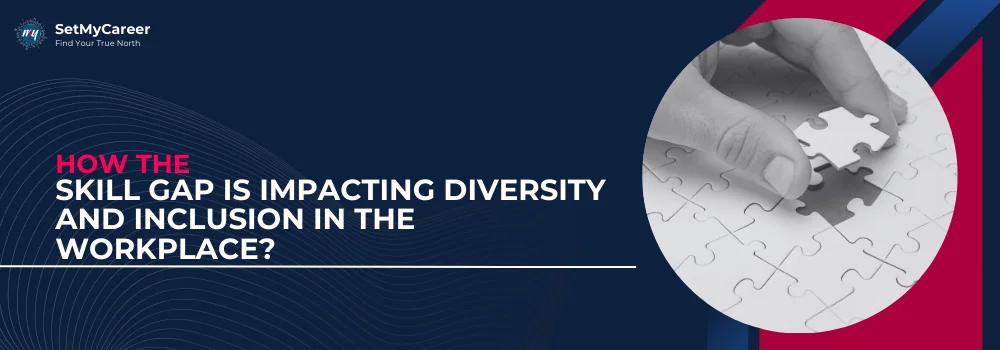Published by Jyothi Patil on 13 December 2024
Content Strategist | Editorial Team Member
Jyothi Patil is a skilled writer with a strong background in English literature, which she applies to crafting engaging content across various platforms. From writing blogs for her website and guest posts to creating pieces on Medium and Substack, Jyothi excels in making complex ideas easy to understand.
Understand the impact of the skill gap on diversity and inclusion efforts and learn actionable strategies to build a more inclusive workplace.

Picture this: you’re leading a team that’s buzzing with ideas, creativity flowing from every corner, and everyone’s unique perspective adding to the magic. Sounds like the dream, right? Now, imagine a barrier—a skill gap—that’s keeping talented individuals from diverse backgrounds out of the room. Companies everywhere are grappling with this issue, struggling to find people who meet technical requirements while also bringing fresh, diverse perspectives. It’s not just a hiring problem; it’s a missed opportunity for innovation and growth. Let’s take a closer look at how this skill gap impacts diversity and inclusion and what can be done to fix it.
Many marginalized communities lack access to quality education and skill-building programs, limiting career opportunities and widening the skill gap. This lack of access prevents individuals from gaining the technical expertise needed to succeed in today’s competitive job market, leaving them at a disadvantage.
Many skill development programs don’t consider the specific challenges faced by diverse groups. Such biases in mentorship and training often limit career growth for minorities, discouraging them from pursuing certain fields and widening the gap in skills and representation.
Underserved areas lack access to technology and reliable internet, preventing many individuals from acquiring essential digital skills needed for today’s economy. Without access to digital resources, individuals miss out on learning opportunities that are vital to staying competitive in the modern workforce.
Financial pressures force individuals to focus on immediate income rather than long-term skill development, limiting access to certifications and unpaid opportunities. Many cannot afford the time or resources to invest in professional development and growth, further solidifying their economic and career limitations.
Without diverse role models or career mentors in key industries, underrepresented groups struggle to envision career success in those fields. Representation is key to building confidence and motivation, and the absence of mentors limits the guidance available to young professionals discovering their career paths.
Traditional hiring practices favor formal degrees over skills, disadvantaging those with potential but non-traditional qualifications, while limited upskilling opportunities prolong the skill gap. Organizations may overlook talented individuals who lack conventional credentials but possess real-world experience and innovative ideas.
By addressing these issues, companies can bridge the skill gap and foster a more inclusive, innovative workplace that truly values diverse talent.

Learn how skills shape diversity in your team
Bridge the GapTo close the skill gap and foster a truly inclusive workplace, companies need to implement targeted initiatives. Here are a few strategies:
Invest in Upskilling Programs: Providing training for employees from diverse backgrounds can help them gain the skills necessary to excel in their roles.
Mentorship and Sponsorship: Pairing underrepresented employees with mentors can give them guidance and the tools they need for career advancement.
Inclusive Hiring Practices: Use blind recruitment and other unbiased techniques to ensure that candidates from all backgrounds are evaluated solely on their skills and potential, not on preconceived notions.
Support for Lifelong Learning: Encourage all employees to pursue continuous learning, making sure that learning opportunities are accessible and tailored to various learning styles.
By taking these steps, organizations can not only close the skill gap but also build a more inclusive and innovative team that thrives on diverse ideas and experiences.
The skill gap in India is a significant barrier to achieving true workplace diversity and inclusion. However, by actively addressing the root causes and implementing supportive strategies, companies can bridge the gap and build more inclusive teams. At SetMyCareer, we guide organizations in creating a workforce that thrives on diverse talents. Reach out to us to learn how we can help you create a more inclusive workplace today.
No. 14/595, 1st Floor, Nanjappa Reddy Layout, Koramangala 8th Block, Bangalore 560095